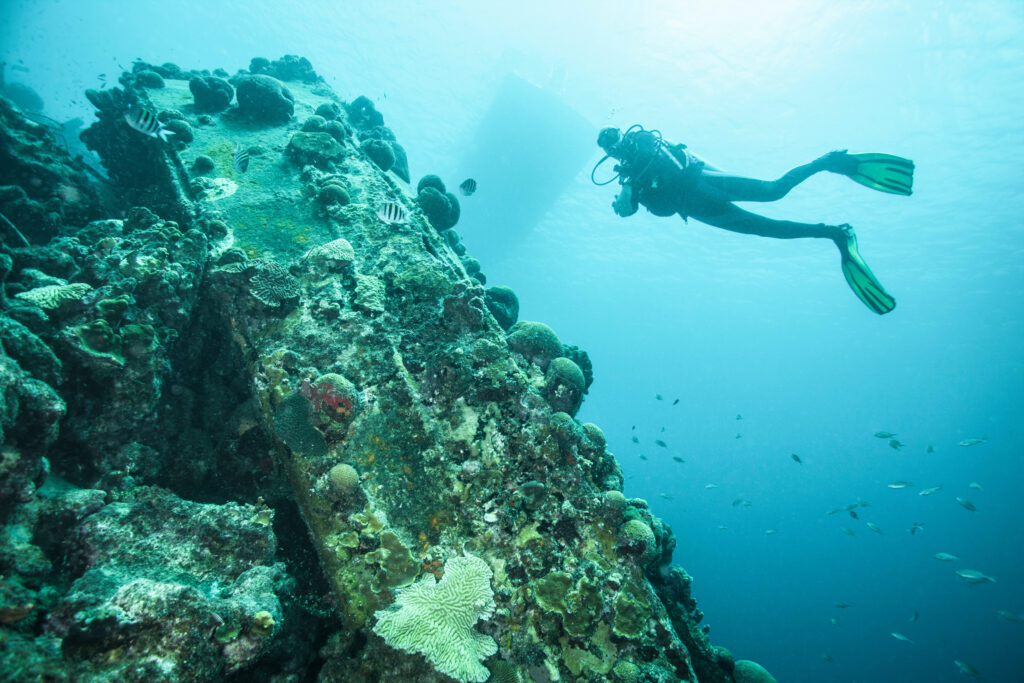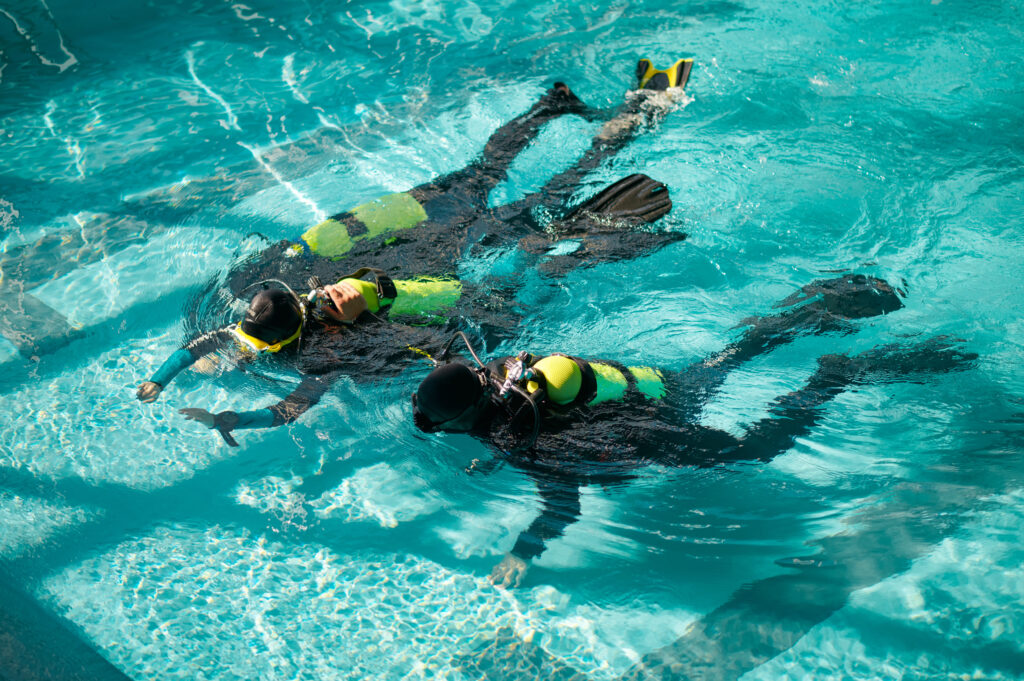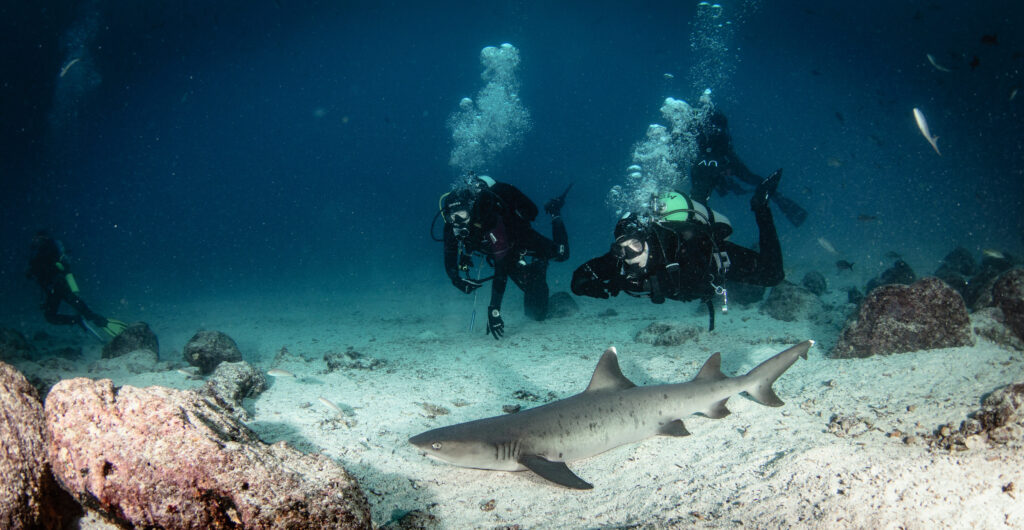What is a cavern in the context of diving?

A cavern, in the context of diving, refers to a semi-enclosed underwater area where natural light is still visible and the entrance remains within view. These formations often occur in rock, creating unique and accessible underwater environments for divers. Cavern diving involves the exploration of these partially enclosed spaces, distinct from full cave diving, where the entrance may no longer be visible and natural light does not penetrate. Cavern divers can enjoy the sensation of venturing into more confined underwater environments while still maintaining the safety net of knowing they can see their way out and rely on natural lighting to guide their orientation. This article will explore the history of cavern diving, its unique geological features, required training and equipment, and the essential guidelines for ensuring safety and responsible diving practices.
What is Aggressive Decompression when Scuba Diving?

What is Aggressive Decompression when Scuba Diving? Aggressive decompression, a pivotal term within the realm of scuba diving, represents a decompression schedule intending to shorten overall decompression time for a given pre-ascent dive profile. This practice operates on a delicate balance, accepting the increased risk of decompression sickness to diminish overall ascent time, which can […]
What is a Gas Fraction?

In the context of scuba diving, a gas fraction refers to the proportion of each gas component within a breathing gas mixture. Understanding gas fractions is crucial for divers to ensure safe and efficient breathing under water. The significance of gas fractions cannot be overstated, as they directly influence dive planning, physiological effects on the body, and overall safety. By grasping the fundamentals of gas fractions, divers can make informed decisions that enhance their underwater experience while minimizing risks.
What is Ingassing?

Ingassing refers to the process by which gases dissolve into the body’s tissues and blood during scuba diving. This process is crucial to understand because it affects how divers must manage their time underwater and the ascent to the surface to avoid serious health risks. The term “ingassing” is often used in conjunction with its counterpart, “outgassing,” which describes the release of gases from the body. Both processes are central to diving physiology and safety, playing a vital role in dive planning and execution.
What is Free Air?

Free air refers to air at atmospheric pressure, which is the pressure exerted by the weight of air in the Earth’s atmosphere. In the context of scuba diving, understanding the concept of free air is crucial for managing various aspects of dive planning and safety, including buoyancy, gas consumption, and decompression sickness. This entry will delve into the relationship between free air and compressed air, and how this understanding impacts diving practices.
What is a Gas Embolism?

A gas embolism is a serious medical condition that can occur when gas bubbles enter the bloodstream and obstruct blood vessels. This condition is particularly relevant to scuba divers due to the unique pressures and environments encountered underwater. When a diver ascends too quickly or experiences equipment failure, gas bubbles can form within the blood vessels, leading to potentially life-threatening complications. Understanding gas embolism within the context of scuba diving involves recognizing how these gas bubbles form, their impact on the body, and the measures necessary to prevent and treat this condition.
What function does Helium have in Scuba Diving?

Helium, a chemically inert and second lightest element in the universe, plays a significant role in the world of scuba diving, particularly in deep diving. Its unique properties provide divers with a safer breathing gas mixture that reduces the risk of nitrogen narcosis and decompression sickness. This entry explores the history, benefits, and applications of helium in scuba diving.
What is a Logbook?

A logbook, within the context of scuba diving, is an essential tool for recording the details of each underwater experience. This practice dates back to the early days of diving when keeping a written record of dives was crucial for ensuring safety and improving skills. Today, the logbook serves multiple purposes, from providing a personal history of dives to meeting legal and safety requirements. Maintaining a detailed logbook is a fundamental aspect of diving that enhances the overall experience and contributes to a diver’s growth and development.
What is a Dive Profile?

What is a Dive Profile? A dive profile is a detailed plan that outlines the depth and duration of a scuba dive, including the rates of descent and ascent, and any necessary decompression stops. It is a crucial element in scuba diving that ensures safety by managing the diver’s exposure to pressure changes and the […]
What is Pounds Per Square Inch (PSI)?

Pounds per square inch (PSI) is a unit of pressure widely used in various fields, including scuba diving. Understanding PSI is crucial for divers because it directly relates to the equipment they use and their safety underwater. In scuba diving, PSI measures the pressure exerted by gas within a scuba tank, which is essential for breathing underwater. This unit helps divers know how much air they have left in their tanks, enabling them to plan their dives and avoid running out of air while submerged.
